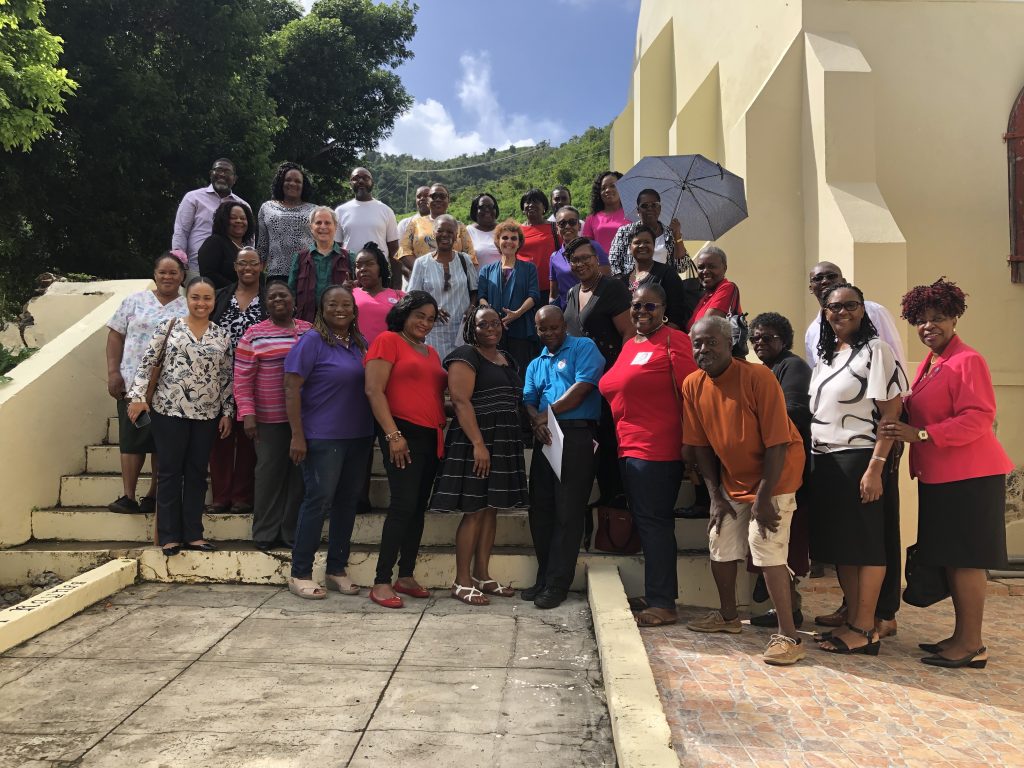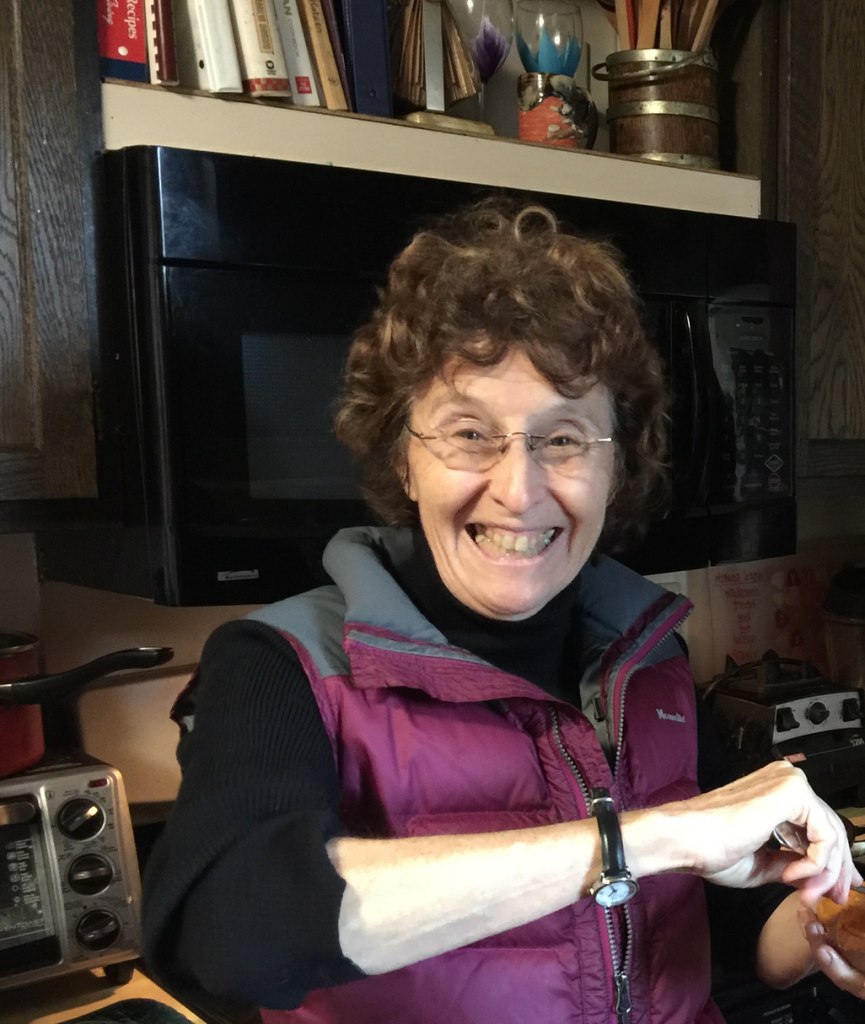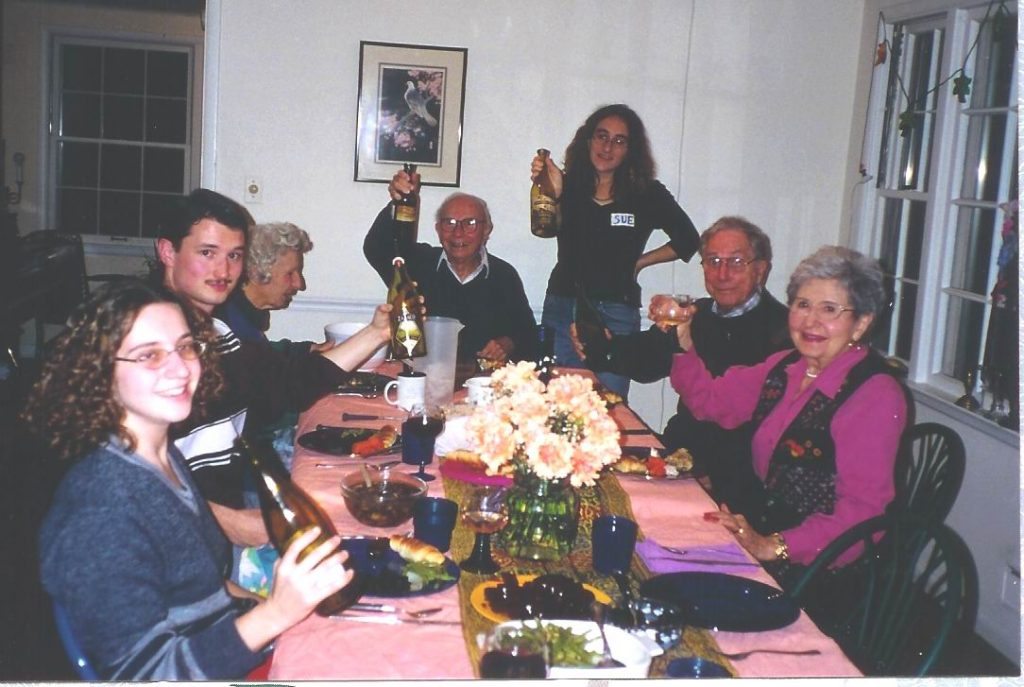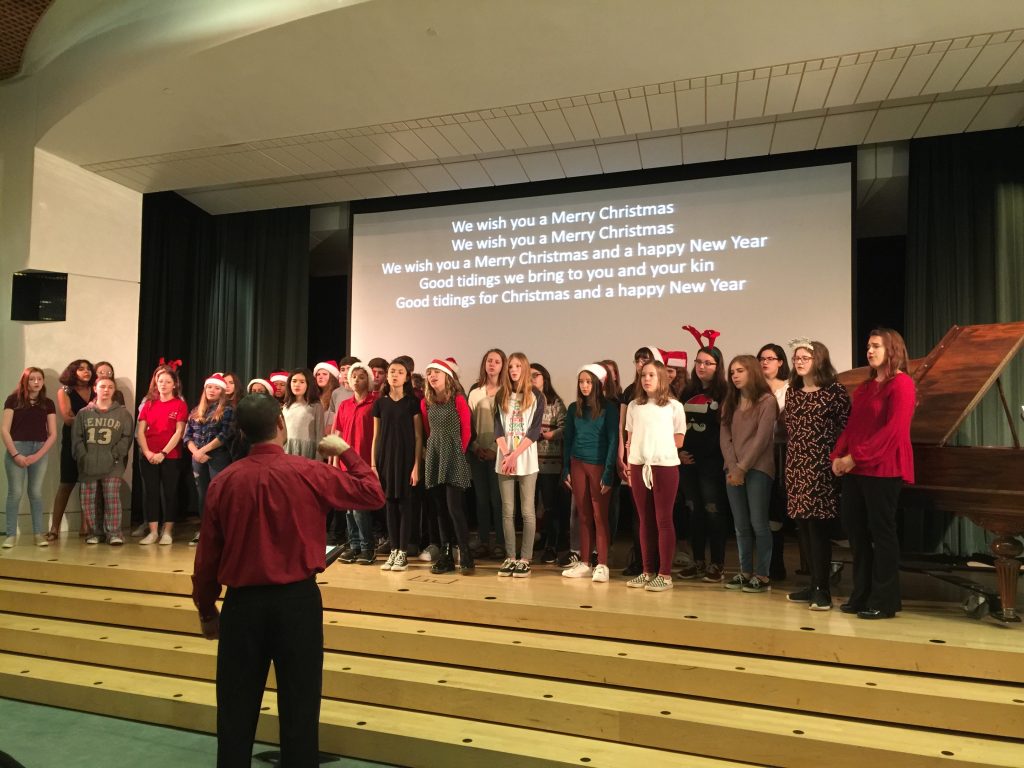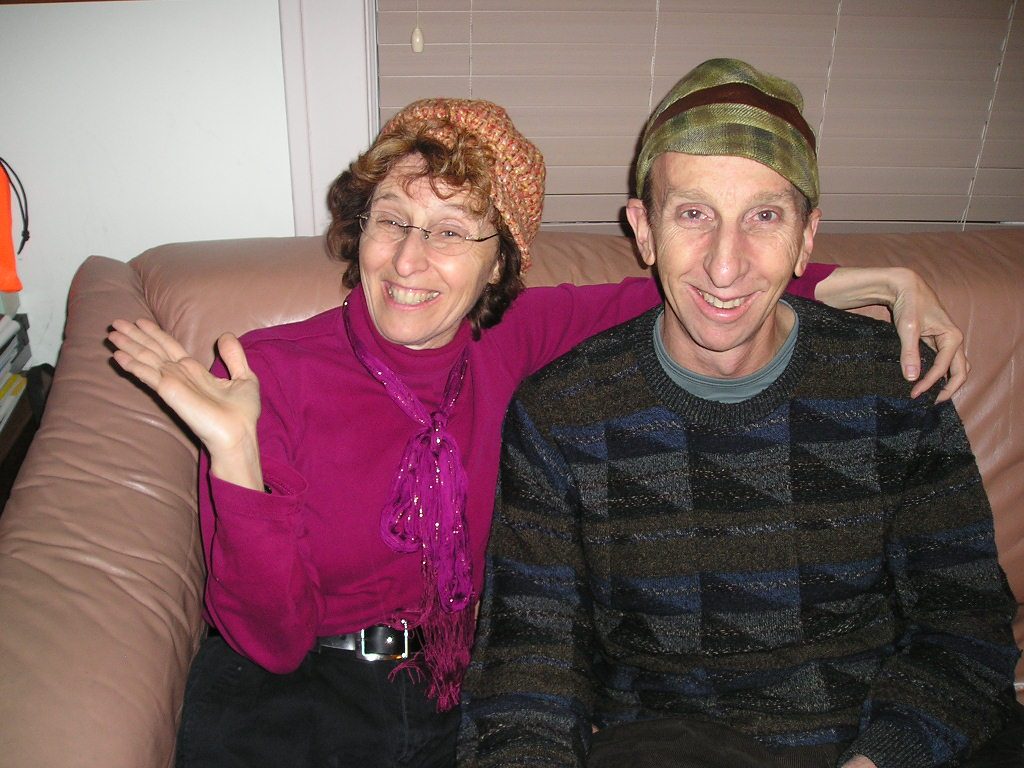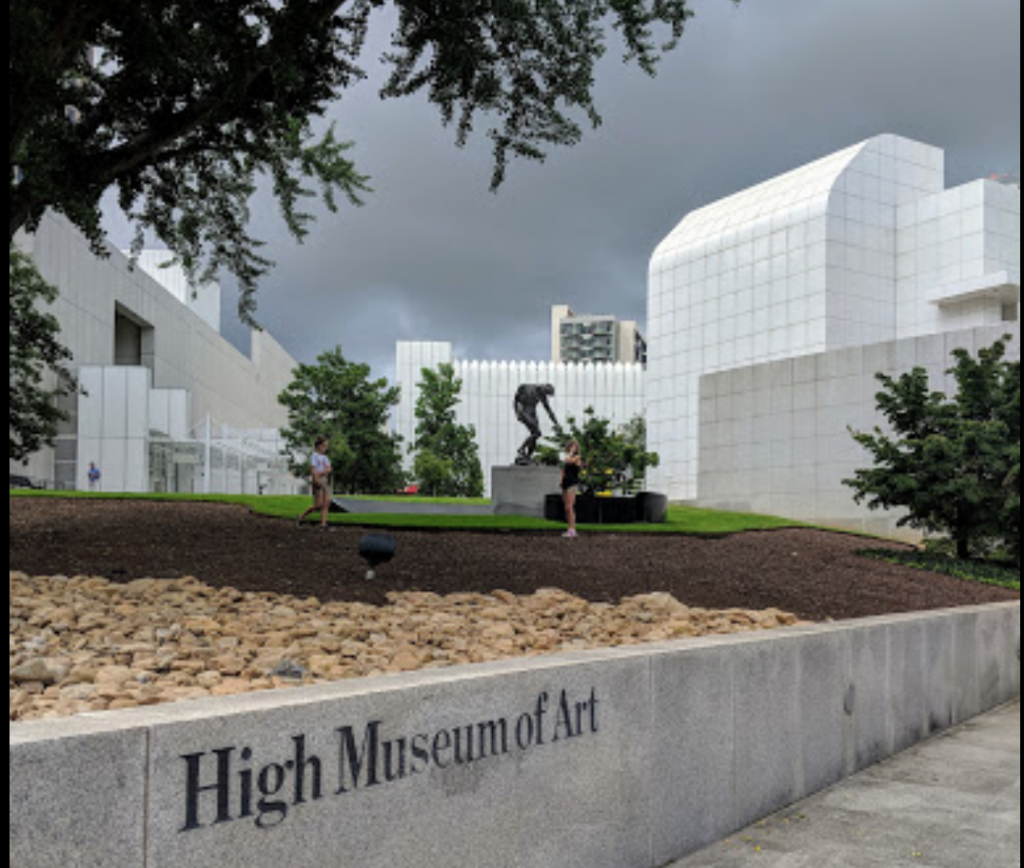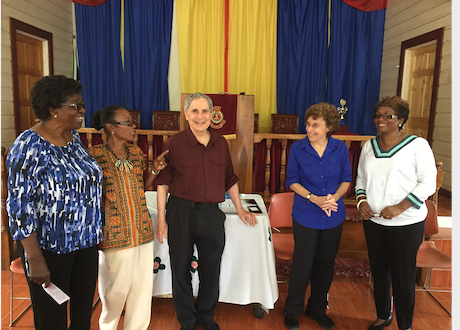Relationships
Presenting to Care Partners in Tortola: The Power of One Person to Make a Difference
The founding of the Virgin Islands Alzheimer’s Association in Tortola, BVI, is about the power of one person to make a difference. It started at a Rotary Club meeting in 2013 when a fellow Rotarian confided in Edna Williams, “I have been diagnosed with Alzheimer’s.”
He told her how hard it was to find support and resources. Edna felt compassion for her friend and others in his situation. As a trained social services worker, human resources consultant, and woman of action, she went to work to remedy the situation. The results: a vibrant Association recognized by Alzheimer’s Disease International. The Association and its many volunteers serve as advocates for people who are living with dementia and their friends and families.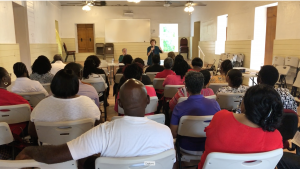
We were honored to spend time with Edna and to share our presentation with a group of family and professional care partners, social workers, and community and spiritual leaders. As we talked about the strength of music to keep us connected, Dawn, the daughter of Edna’s Rotarian colleague, the man who had inspired the founding of the Association, stepped forward to tell us her own story.
For several years, her father had been listless and withdrawn, seldom showing interest in anything. She mourned his father’s dynamic personality and tried many things to lift his spirits and pique his interest. Then she came upon a favorite song of his from years back, a lively tune with a Latin beat.
“When I played that song for him,” she told us, “he came to life. His eyes brightened and he began to mouth, then sing the words. He leaned forward in his chair, wanting to get up and move. It was such a meaningful transformation. The music connected with him and that helped him connect with us.”
Her touching story was a reminder that arts and creativity can go beyond the rational mind and the spoken word and awaken our hearts and spirits.
As we shared ideas for staying connected with each other, regardless of our abilities, our own hearts and spirits were expanded by our time with Edna and her group. It’s wonderful to live in a place of breathtaking beauty. It’s even greater to live in a community where people reach out to help and support their neighbors.
Five Ways to Make Valentine’s Day Special for a Loved One Living with Dementia
My parents liked to celebrate Valentine’s Day with dinner and dancing. Years into my mom’s Alzheimer’s journey, my parents’ love hadn’t diminished, but my mom’s capacity for going out to dinner and dancing had drastically decreased. I saw how blue my father was—one more event he had to give up, one more change in the woman he loved—and I searched for alternatives that might cheer him up. Here are five ways to make Valentine’s Day special.
Look for a favorite thing. Seek one simple pleasure your loved one might enjoy. Mom loved potato soup and chocolate and fresh strawberries. These were part of our celebration.
Nurture yourself: include your own favorite thing. Bring yourself into the celebration and include something that makes you happy. I brought foods my father and I both liked as part of our little party.
Pick several ways to express your love. Poetry, music, gifts, flowers, and photo albums—you can use any of these resources as a catalyst to talk about your feelings. Dad and I sang Mom old show tunes and love songs, music she really enjoyed. Mom adored Shakespeare; we had a couple of sonnets on hand. She and Dad had once created a beautiful flower garden; Dad brought her a single red rose.
Take joy in the simple act of expressing yourself. Being with my mom was a chance to really practice the mythical “unconditional love.” Mom couldn’t tell me she loved me. During one Valentine’s Day celebration, she fell asleep while I was holding her hand and talking sweetly to her. But there was a comfort in expressing my love and I kept on talking.
Celebrate love in all its glorious guises. During their long marriage, my father had walked into a room millions of times and often, Mom had been busy and hadn’t particularly smiled or remarked. But with her dementia came a deep dependency on Dad. When Dad walked into a room, my mother’s face lit up. My father basked in that light. The sparkle in my mother’s eyes was the new, “I love you, darling.” The light said everything my mother could no longer say.
Deborah Shouse is the author of Connecting in the Land of Dementia: Creative Activities to Explore Together and Love in the Land of Dementia: Finding Hope in the Caregiver’s Journey.
The Ways the Cookies Crumble
Each woman would bring a batch of home-baked cookies, she wrote. We would then get to sample all the cookies and bring a bag of treats home to our families. I adored the idea of getting to bring my teenage daughters such an array of home-baked sweets. I envisioned a room filled with charming baskets of star-shaped sugar cookies, generously topped with red or green frosting. I imagined a jolly basket of Santa cookies and a fragrant ginger-scented array of reindeer cookies. I fantasized about thumbprint cookies, shaped like snowflakes and gooey with jam, and about silky buttery sandies melting in my mouth. And…
Then I realized the implication; these holiday cookies would not only need to be beautiful, creative, and delicious, they would need to be presented in festive and unusual ways. I had never really made anything other than the occasional clumpy chocolate chip, peanut butter, or oatmeal cookie. Why hadn’t my mother been a more glamorous baker, I fretted, as I rummaged in the refrigerator for something to make for dinner. She only made the plainest of cookies—date crumbs, peanut butter, and chocolate chip. As I boiled water for pasta and heated up the jar of marinara sauce, a number floated into my head and I dialed it.
“If I go to this party, will you help me with a recipe and a cute idea for presenting the cookies?” I asked my friend Judith, who was graced with five-star baking abilities.
“Of course,” she said. Judith’s aplomb would fit right in at such a gathering. Briefly, I wondered if she could attend in my place and just deliver my treats to me.
I told my daughters the good news—in several weeks we would have our own private holiday cookie festival. Since our sweets were usually made by some giant corporate entity, they were ultra-excited.
A week later, I received a thick packet in the mail. Judith had selected a number of “easy” recipes for me. I smiled as I looked over the pictures of adorable cookies with a cute holiday twist.
I frowned as I read through the baking instructions; each cookie demanded its own specialized pan, gourmet tool, thermometer, or esoteric ingredient.
As the day of the cookie party neared, I had no recipe, no cookies, no plan, and nothing good to wear.
That night at dinner, I said, “I don’t think I can go to the party.”
“Why not?” Sarah said sharply. She was thirteen and took promises and plans very seriously. Plus, she had a highly sophisticated taste for sweets and was looking forward to expanding her repertoire.
“I can’t just walk in carrying a paltry tray of blobby looking chocolate chip cookies.” My throat constricted and I wished I were a mother who could whip up a butterscotch soufflé from ingredients that just happened to be in my kitchen cabinets.
“Why not?” my older daughter Jessica said. Even during the holiday season, she kept to her black-themed wardrobe. She looked Gothic and serious as she said, “Everyone else will be all silver bells and fancy sprinkles. You will represent the good old- fashioned approach to the holidays; your simplicity will be refreshing.”
I took a breath and considered her words. If worse came to worse, I could always pretend I never saw those cookies before in my life.
That evening, my daughters and I made chocolate chip cookies and put them in a tin lined with aluminum foil. In honor of the season, I unearthed a shiny red bow to top the tin.
Walking into the party was like walking into a fairyland. Christmas lights lined the windows and a sparkling tree spread its branches into the living room. The dining room table looked like the December cover of Gourmet magazine. Stars, hearts, Christmas trees, snowmen, all the icons of the season were glowing with icing and sprinkles.
Some cookies were nestled in hand-made wreathes. Others shone from star-shaped or tree shaped boxes. A miniature set of reindeer surrounded a bejeweled fruitcake. A galaxy of colorful star-shaped cookies decorated a tiered silver-server. I admired each display while looking for a quiet corner where I could tuck in my tin of chocolate chips. I finally settled them between candy cane cookies and gingerbread Santas.
My hostess offered me champagne and the conversation flowed. Then she announced, “It’s time to gather the cookies.” She had a large silver gift sack for each of us and encouraged us to take several of each cookie. As I toured the table, I sneaked a look at my humble confection. What if no one took any? What if I had to bring the whole batch home? What if… The doubts daunted me as I filled my sack with delectables.
“Who made the chocolate chip cookies?” someone asked. The room quieted and my breath quickened. As the silence spread, I finally said, “I did.”
“What an interesting idea,” someone said.
“I never would have thought of it. It’s comforting. These cookies remind me of my mother and home.”
I smiled as I put three Santas in my sack and headed for the reindeer.
That evening my daughters and I had a magnificent holiday feast, consisting of cookies, cookies, and cookies.
“Here’s the strange thing, Mom,” Jessica said, as she leaned back, sated. “Your cookies are really just as good as any of them. Not as cute, but just as delicious.”
“More delicious,” Sarah said.
I smiled, thinking that about my mom’s cookies when I was growing up. Maybe there was something about the plain old recipes offered in the plain old way, so sturdy, so unglamorous, and yet so deliciously like coming home.
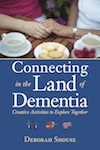
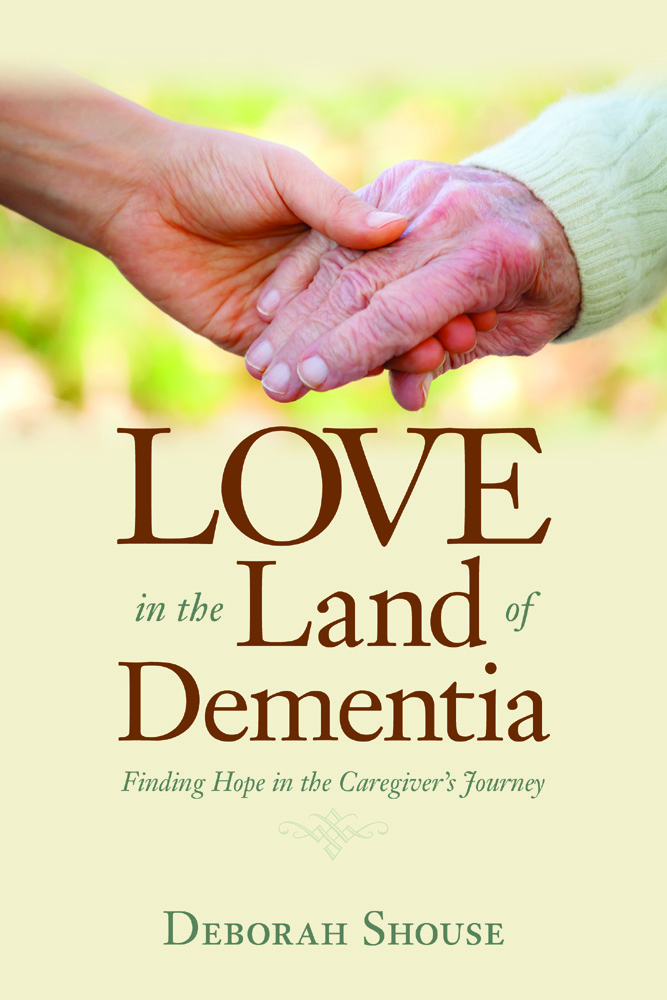
Seven Secrets of Dementia Inclusive Holiday Cooking
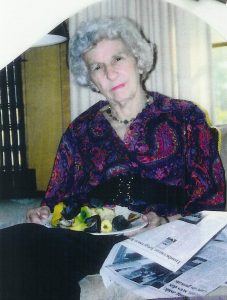 “Who prepared this delicious meal?” a friend asked during a holiday dinner.
“Who prepared this delicious meal?” a friend asked during a holiday dinner.I named my brother Dan, our head chef, first. Then I included the support team—myself, my mom, my daughters and nephews.
“Did I help?” Mom whispered as I passed her the mashed potatoes.
“You sure did,” I told her. ”You mashed the potatoes, put the marshmallows on the sweet potato casserole, and mixed the fruit salad.”
“That’s good,” she said. “I like to help.”
Our desire to help and contribute to seasonal celebrations doesn’t end with a diagnosis of dementia. It’s lovely to linger in the kitchen together, preparing food for the holidays. It’s even lovelier when you can adapt and enjoy dementia inclusive holiday cooking so that people of varying abilities can participate.
Rebecca Katz, author of The Healthy Mind Cookbook, sees food as a great equalizer, something anyone can enjoy regardless of abilities. Fixing a delicacy for someone offers a tangible and delicious way to give back.
Here are six secrets of dementia Inclusive holiday cooking.
- Leaf through a favorite family cookbook or recipe box and use the pictures and recipes as a catalyst for conversation. Ask open-ended questions, such as, ”What does that brownie recipe make you think of?” “What do you like about the holiday season?”
- Chose a time of day when you’re both rested.
- Create a comfortable kitchen environment, by playing familiar seasonal songs you can both hum or sing along to.
- Reduce extraneous noise and distractions, such as a television in the background.
- If you wish, take photos during the experience. That way, you can relive the adventure and share with family and friends.
- Indulge in instant gratification, if possible, by sampling your work when the cooking is complete.
- Even if the person living with dementia can’t help prepare food, he can still enjoy sitting in on the action and the conversation.
Whether you’re stirring a pot of orzo or dropping mint leaves into cool water, enjoy your time of creation and connection in the kitchen.
A longer version of this piece originally appeared on Joan Lunden’s excellent website: Enjoy Dementia Inclusive Holiday Cooking. Thanks to Sue Fitzsimmons, MS, ARNP, Judith Fertig, author of The Memory of Lemon, Kate Pierce, LMSW, Alzheimer’s Association Greater Michigan Chapter, and Rebecca Katz, author of The Healthy Mind Cookbook
Deborah Shouse is the author of Connecting in the Land of Dementia: Creative Activities to Explore Together and Love in the Land of Dementia: Finding Hope in the Caregiver’s Journey.
KC Movies & Memories’ New Focus on Musicals: Oh What a Beautiful White Christmas
First we get people’s toes tapping and hands clapping with live musical performances from some of Kansas City’s great musicians. Then KC Movies & Memories’ new focus on beloved movie musicals keeps our audience engaged and connected. This is a lively, intergenerational experience that families can easily replicate. Please see our invitation below.
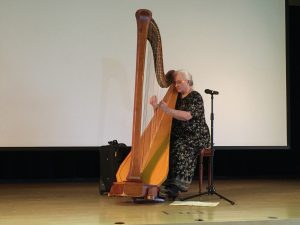 Our November program delighted guests with an eclectic array of harp music, performed by Juli Sackman. We followed that with the story of the award-winning movie Oklahoma, punctuated by lively song and dance numbers. Here is the link to that experience.
Our November program delighted guests with an eclectic array of harp music, performed by Juli Sackman. We followed that with the story of the award-winning movie Oklahoma, punctuated by lively song and dance numbers. Here is the link to that experience.
https://www.youtube.com/watch?v=56FbaPmCIbQ&feature=youtu.be
In December, we were wowed by Indian Hills Middle School eighth grade choir. They entertained us with intricate renditions of holiday tunes. Then, Jim Poplau, manager of the Waldo Library, shared one of his favorite holiday films, White Christmas. Watching the 1954 trailer of the film, in Vista-Vision, reminded many of the rare childhood treat of attending the cinema. Jim regaled us with the complicated plot of the film and shared some of the beloved songs, including Sisters, Count Your Blessings and of course White Christmas, which we all sang along with.
Here’s a link to that experience:
https://www.youtube.com/watch?v=jN2p3vw3jyI&t=13s
Invitation: If you’d like to add some musical movie offerings to your holiday gathering, simply email us at creativity@pobox.com and we’ll send you a PDF 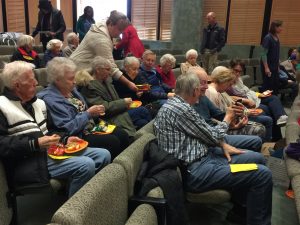 featuring YouTube song clips and scripts you can modify for your family. These Movies-in-a Minute are courtesy of the Kansas City Public Library and The Creativity Connection.
featuring YouTube song clips and scripts you can modify for your family. These Movies-in-a Minute are courtesy of the Kansas City Public Library and The Creativity Connection.
Here’s to a lovely and meaningful holiday season.
What we look for in our dementia-friendly films.
- Uplifting content
- A straightforward narrative that’s easy to follow.
- A subject matter that people might identify with
- No violence and a minimum of startling or loud noises
- No subtitles or complicated foreign accents
- Familiar or soothing music
Please join us for our Holiday Memory Cafe…
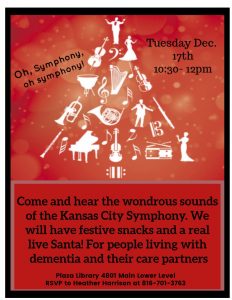
Deborah Shouse is the author of Connecting in the Land of Dementia: Creative Activities to Explore Together and Love in the Land of Dementia: Finding Hope in the Caregiver’s Journey.
A Thanksgiving Love Story: Bringing Home the Gravy
Thanksgiving changed the year I went vegetarian. I did not mind giving up the tender, moist turkey or the savory oyster-specked stuffing. But giving up the flavorful flow of mushroom-laden gravy was quite another thing. I watched enviously as my family ladled the luscious liquids over their mashed potatoes, turkey and stuffing. As I nibbled dryly on my carrots, green beans and salad, my lower lip protruded. I felt left out and deprived.
My brother, Dan, ever alert to the pouting big sister, came up with a solution.
“Next year I will make special vegetarian gravy just for you,” Dan promised.
Years later, that special vegetarian gravy has become one of my favorite Thanksgiving rituals. I begin fantasizing about it the moment the autumn leaves turn crimson. I know that in mere weeks, my brother and his family will arrive and I will have my yearly boost of family and feasting, highlighted by gravy.
When my brother calls to tell me his travel plans, I write his arrival time and GRAVY on my calendar. The night he comes to town, we make the shopping list together, avidly discussing how many pounds of mushrooms we need for both the carnivore and vegetarian pots of gravy. I relish the early-Wednesday morning trip through the grocery store, where Dan and I and our children carefully select the foods we will be making the next day. We linger in the produce aisle, filling several sacks with gleaming white mushrooms and buying rustling yellow onions.
On Thanksgiving Day, Dan and I and other family members spend long, luxurious hours cooking. Dan mans the stove and I manage the slicing and chopping. Together we snap, peal, slice and dice the vegetables that will accessorize the turkey. I take special pleasure in wiping clean and slicing the mushrooms, then bringing my brother the brimming bowlful. When he has nodded his approval, I get out the old copper pot I bought in Germany in the early seventies. This year, Dan is improving his already amazing gravy. With his new immersion blender, he creates a rich base of caramelized onions, whose flavor surpasses that of the lowly vegetable cube. He adds in a little flour, then gentles the mushrooms into the onion broth. When the pot is bubbling with thickening nectar, he says, “Taste this and see what you think.”
I always think the same thing—“Wow, this is great.”
We are in a state of giddy and satisfied exhaustion by the time our guests arrive. We share grateful prayers with everyone and lay out the feast, including plenty of turkey-based gravy for the rest of the family.
Then comes the moment I have been waiting for: I sit down, my own personal pot of gravy poised by my plate. I cover the mashed potatoes, carrots, green beans, and salad with the aromatic concoction and I savor every bite. But more importantly, I savor the bounty, creativity, and love that have gone into this simple dish. Through this gravy, my brother speaks with his hands and his heart, saying: “I care about you and I am going to make sure you are not left out and that you have something fantastic to eat.”
For that and so much more, I am thankful.
…………
And now, if you’d like to create a Thanksgiving love story, bring home this delicious gravy.
Dan Barnett’s Chicago Style Never-Enough-Mushroom Vegetarian Gravy
Ingredients
2 large onions (chopped)
2 pounds (or more) white button mushrooms sliced (can add some portabellas for enhanced flavor)
1 cup of white wine (of lesser quality)
Salt & pepper to taste
2 tablespoons of cornstarch
Olive oil
For 5 cups of water, start out with 2 vegetable boullion cubes. Add more if needed.
Directions
To create the gravy base:
In a four-quart pot, pour a thin layer of olive oil and turn the burner on medium.
Add the onions and sauté for10-15 minutes until they are caramelized (golden brown)
Add water until the pot is about half full.
Simmer slowly for 30 minutes.
Blend the onion water mixture using either an immersion blender or by transferring the mixture to a food processor.
Add the 2 pounds (or more) of sliced mushrooms white wine and fill the pot with water until it is 3/4 full. Simmer for 15-20 minutes.
In a small bowl, put 2 tablespoons of cornstarch. Pour in a small amount of the broth. Once it’s a smooth paste, pour in more liquid to make it a runny paste. Then pour the mixture slowly back into the gravy while stirring. This will thicken it. You may have to do this a couple of times to achieve the desired thickness.
Simmer for 30 minutes and season to taste with salt and pepper.
###
Deborah Shouse is the author of Connecting in the Land of Dementia: Creative Activities to Explore Together and Love in the Land of Dementia: Finding Hope in the Caregiver’s Journey.
Laughing All the Way: Boosting Health and Happiness
“When You Laugh, you change,
and when you change the whole world changes.”
-Dr Madan Kataria, MD, Founder Laughter Yoga Movement
 We were warmly welcomed into a parlor area, reminiscent of an elegantly aging aunt’s apartment. A piano waited patiently along one wall. There was a colorful bowl of fruit and a tempting array of pastries and fruit-infused waters. As we waited, we looked out into an outdoor garden and picnic area. The 80th Street Residency, a memory care community in Manhattan, created a warm, home-like atmosphere for its residents. Ron and I had come here to offer a laughter yoga class, hoping to boost our participants’ health and happiness. We worked with their activities coordinator, Jackie LaBau.
We were warmly welcomed into a parlor area, reminiscent of an elegantly aging aunt’s apartment. A piano waited patiently along one wall. There was a colorful bowl of fruit and a tempting array of pastries and fruit-infused waters. As we waited, we looked out into an outdoor garden and picnic area. The 80th Street Residency, a memory care community in Manhattan, created a warm, home-like atmosphere for its residents. Ron and I had come here to offer a laughter yoga class, hoping to boost our participants’ health and happiness. We worked with their activities coordinator, Jackie LaBau.
Here’s what we’ve learned about laughter yoga: often people look, act, and feel differently after they’ve experienced a session. There is a magic about intentionally laughing with a group. The experience of breathing, clapping, engaging in playful imaginings, and of course, laughing, soon softens the spirits. People feel energetic and connected. Everyone, including staff, residents, and us, leave feeling happier. That’s what happened in New York, just as it has every time Ron and I have led laughing sessions.
Back home in Kansas City, we laughed with the lively people at Jeanne’s Place, CareHaven’s day program for people living with early stage dementia. We have laughed with these wonderful folks before, and now they start giggling when we walk in.
 We also visited Mandy Shoemaker and her team at Prairie Eider Care, our area’s only Eden Alternative homes, and we had fun admiring their outdoor barnyard collection of silky chickens, a potbellied pig, and sassy ducks. Then we settled into their welcoming living areas. We sat in intergenerational circles with staff, family members, and residents, talking, singing, and laughing.
We also visited Mandy Shoemaker and her team at Prairie Eider Care, our area’s only Eden Alternative homes, and we had fun admiring their outdoor barnyard collection of silky chickens, a potbellied pig, and sassy ducks. Then we settled into their welcoming living areas. We sat in intergenerational circles with staff, family members, and residents, talking, singing, and laughing.
Dr. Kataria, the founder of Laughter Yoga, believes that inviting out our childlike energy and acting playfully is vital to living a balanced and healthy life. Plus, it’s tremendous fun. He says: “Laughter Yoga is an aerobic workout that helps uplift your mood within minutes by releasing endorphins from your brain cells. You often remain energized, relaxed, and in good spirits throughout the day. Laughter also makes our immune system stronger, increases oxygen intake, and reduces stress. Plus laughing with others builds a social bond and reduces feelings of isolation.”
In our groups, we created laughter milkshakes, with each person choosing their favorite flavor of ice cream. We looked at each other, waved, and laughed. We had a lot of dog lovers in our groups, so we imagined how a chihuahua would laugh. A member of the nursing team loved large dogs and she helped us to guffaw like a Great Dane. Most of our group loved baseball, so we sang, “Take Me Out to the Ballgame,” then substituted the words with “Ha Ha “ syllables, otherwise known as the Ha Ha Chorus. That chorus works for any familiar song and tickles your funny bone.
Ron and I learned Laughter Yoga from the amazing Robert Rivest, who is a master 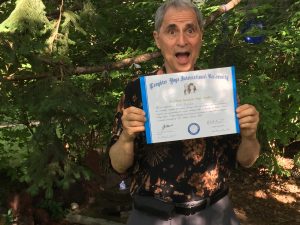 trainer and who studied with Dr. Kataria. But you don’t need to be a trained facilitator to bring more laughter into your life.
trainer and who studied with Dr. Kataria. But you don’t need to be a trained facilitator to bring more laughter into your life.
Quick Tips for Adding Laughter into the Day
•Look at the clock and laugh for one minute.
•When driving, laugh during red lights.
•When working out, pick a couple of exercises, such as squats and curls, and laugh while you’re doing them. (Want to get others laughing? Do this at the gym!)
•Use the “ha ha chorus” to bring giggles into your life. Take any song and substitute “ha ha ha’s” for the words. This works well in the shower, car, on walks and more.
Want to laugh more?
Visit laughteryoga.org and robertrivest.com
Contact Deborah Shouse and Ron Zoglin: 816-361-7878 Email myinfo@pobox.com Website: DemeniaJourney.org
If you are part of a memory care community in the KC area and you’d like to gift your residents with laughter, feel free to reach out to us at creativity@pobox.com
Click to view informative and inspiring short videos on our YouTube channel
Deborah Shouse is the author of Connecting in the Land of Dementia: Creative Activities to Explore Together and Love in the Land of Dementia: Finding Hope in the Caregiver’s Journey.
Musing Together: Looking at Art Expands Skills, Increases Socialization, and Widens Horizons
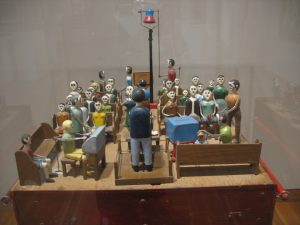 The group pauses in front of a large contemporary sculpture, depicting a preacher standing before his congregation at a small country church. They walk around the piece, noticing the pews, the organist, and the variety of parishioners, and chatting as they view. Then they settle into chairs and co-facilitator Esther Smith asks: “What is one word that comes to mind when you look at this piece of art.”
The group pauses in front of a large contemporary sculpture, depicting a preacher standing before his congregation at a small country church. They walk around the piece, noticing the pews, the organist, and the variety of parishioners, and chatting as they view. Then they settle into chairs and co-facilitator Esther Smith asks: “What is one word that comes to mind when you look at this piece of art.”
“Boring,’ says one woman.
“What makes it boring?” Esther asks.
“It brings me back to my childhood, when I was stuck in church for hours,” she answers. “I was so bored.”
A few others nod. Someone asks, “When was this made? Where is it from?” and the conversation about the art continues.
Every month at the High Museum in Atlanta, Georgia, Teaching Artist Esther Smith guides a group of care partners and people living with dementia on a 90-minute gallery exploration called Musings Together.
“It’s a light-hearted, interactive experience,” Esther says. “We go at a slow pace, seeing only three to four works each time. We want people to have a comfortable, personalized experience with art.”
 The open-ended conversation brings out people’s stories and ideas. Sitting in front of Giovanni Bellini’s Madona and Child, Esther asks, “What lines do you notice in this painting? Trace them in the air with your hand.”
The open-ended conversation brings out people’s stories and ideas. Sitting in front of Giovanni Bellini’s Madona and Child, Esther asks, “What lines do you notice in this painting? Trace them in the air with your hand.”
After people trace their lines, she asks, “What line was most interesting to you?” That question might lead into a discussion of what makes this painting different. Then Esther might invite the group to pose like the picture. She might say, “How would that baby’s head feel in your hand?”
“These simple prompts launch us into deep conversations,” Esther says. She and her team are experimenting with expanding the sensory experience, including bringing out oranges when they’re gazing at a still life of fruit and letting each guest hold and examine the orange. Esther also invites people to occasionally sketch an aspect of a drawing that appeals to them, using a drawing pad on a clipboard.
“ A number of our participants have never been regular museum-goers. Now they feel comfortable here and come more often,” Esther says. “Developing a new community of friends and an expanding interest in art enriches their lives.” #
Want to look at art with someone who is living with dementia?
If you’re visiting a museum, focus on a gallery with 3-4 large and interesting pieces. Ask a docent for advice, if needed. If you’re at home, give yourself plenty to time to comfortably view a few works of art on-line or in books.
- Bring a folding chair, so you can sit.
- Chose a time of day when your partner is energetic and the gallery is relatively quiet.
- Have fun just noticing the aspects of the piece. You might invite comments on colors, textures, familiar figures, objects that seem odd to you, and other aspects.
- Ask open-ended questions, such as, “What does this piece make you think of?” “What do you like about this piece?” “How do you think that main guy feels?”
When attention wanes, move onto something else, including a lovely coffee or tea break.
Click to view informative and inspiring short videos on our YouTube channel
Deborah Shouse is the author of Connecting in the Land of Dementia: Creative Activities to Explore Together and Love in the Land of Dementia: Finding Hope in the Caregiver’s Journey.
Quality Moments in the Land of Dementia: Laughing and Creativity in Jamaica
Our hosts started the program with a beautiful hymn of gratitude, a perfect way to acknowledge the spiritual aspects of connecting and laughing in the land of dementia. We met in the Salvation Army Church and Community Centre in historic downtown Falmouth, Jamaica, with a group of caregivers and community advocates. During our time together, we shared stories, information, laughter exercises, and creative ideas for taking care of ourselves and staying engaged.
 For many, this was an introduction to dementia. For others, who were in the midst of caregiving, this was a time of learning and sharing.
For many, this was an introduction to dementia. For others, who were in the midst of caregiving, this was a time of learning and sharing.
Ron and I talked about the importance of accepting each other as we are, no matter what we are going through. We discussed the power of having a purpose and how vital it is for all of us to have meaningful relationships and interesting experiences. .
”When communicating with people who are living with dementia, don’t argue,” Shirley Duncan reminded everyone. “Don’t criticize. Be there to support and appreciate.”
“When we are kind to ourselves, then we are better able to be kind to others,” one of our attendees said.
We discussed Dr. Cameron Camp’s concept of cognitive ramps, offering people the assistance they need 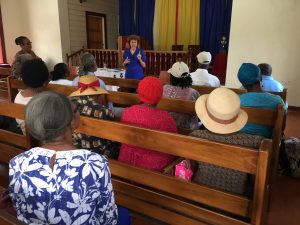 to remain engaged in the activities they love. Here’s one example from our session: Lorna’s mother was a professional cook, completely at home in the kitchen. As her dementia progressed, she could no longer remember the family’s favorite recipes. But she could sit in the kitchen and enjoy the energy of cooking. And when Lorna’s daughter said, “We are going to make your famous stew. Does it have an onion in it?” the mother smiled and nodded. Ingredient by ingredient, they consulted her, and she smiled and nodded at the mention of the right ingredients. Even though she wasn’t physically creating the meal, she was an integral part of the process.
to remain engaged in the activities they love. Here’s one example from our session: Lorna’s mother was a professional cook, completely at home in the kitchen. As her dementia progressed, she could no longer remember the family’s favorite recipes. But she could sit in the kitchen and enjoy the energy of cooking. And when Lorna’s daughter said, “We are going to make your famous stew. Does it have an onion in it?” the mother smiled and nodded. Ingredient by ingredient, they consulted her, and she smiled and nodded at the mention of the right ingredients. Even though she wasn’t physically creating the meal, she was an integral part of the process.
We talked about the power of music, sharing ideas from Dan Cohen’s Music and Memory program and introduced people to the personal playlist. We had an impromptu Conductorcise session, using Maestro David Dworkin’s aerobic and ground-breaking program, pretending we were conducting a symphony orchestra. We used laughter syllables to make it even more fun and soon everyone was standing up and conducting and laughing.
We shared a story from Karen Stobbe, reminding us all to affirm and appreciate and to use the improv technique, “Yes and…” to ignite and invite conversation.
Throughout our discussion, we wove in laughter exercises.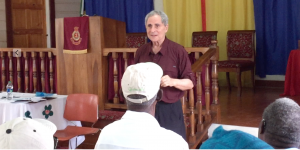
We enjoyed an imaginary laughter swim. We batted around laughter balloons and cooked up a laughter stew that included fish, pumpkin, garlic, carrots, Irish potatoes and okra.
At the end, we breathed in our gratitudes, closed our eyes and sent our feelings of love, connection, and laughter into the world, hopefully to help and inspire others.
Click here for a small taste of this lively workshop:
A special thanks for the dementia advocates and community volunteers who brought everything together, including Dundeen Ferguson, Shirley Duncan, Sandra Latibeaudiere, Elise Thomas, and Lorna Colley. And thanks to everyone who attended.
Deborah Shouse is the author of Connecting in the Land of Dementia: Creative Activities to Explore Together and Love in the Land of Dementia: Finding Hope in the Caregiver’s Journey.
An Old-Fashioned Holiday
This old-fashioned holiday story from Love in the Land of Dementia: Finding Hope in the Caregiver’s Journey celebrates the spiritual aspects of living with dementia.
When I walk through the doors of the nursing home, I find my mother in her wheelchair, right in front of the medication cart, right behind the central nursing station, where nurses, delivery people, staff and family members congregate. Mom is bent over, her baby doll lying across her lap. When I walk up to her, I ratchet up my energy and widen my smile. I am preparing to clown her into a reaction.
Later my father will ask if I think she recognized me.
“No,” I will have to tell him. “She did not recognize me. But she did smile.”
The smile is important.
My hand waving and head bobbing does its work: Mom does smile, and I can tell she is in her own current version of a good mood.
“Music in the dining room,” the activity board reads, so I wheel her in that direction. An elderly man with a red and white trimmed Santa hat passes us in the hallway.
“Look Mom, there’s Santa,” I tell her.
Having been brought up Jewish, Mom never was all that enthralled with the Claus mythology and she has not changed.
A white-haired woman is in the dining room, busily setting up for the music program. Several patients are already gathered. The woman takes out a microphone, a boom box, an illuminated plastic snowman, and a small silver bell. I continue wheeling Mom down the far corridor, liking the sense of companionship I have from this movement.
As we stroll, a nurse carrying a plate of lettuce walks past us.
“She must have been a good mother,” she says, nodding at the way Mom is holding the baby. “She must still be a good mother.”
“She is,” I say.
I have never really said to my mom, “You were a good mother.”
Now I realize she was.
I can see that Mom is enjoying the ride. She loved movement when she was younger and was far more adventuresome than Dad when it came to airplanes, ski lifts, fast cars, and speedy boats. For her, biting breeze across the face was thrilling, not threatening. Until she became a mother, that is. Then she abandoned her pleasure in the heights and speed and concentrated on making sure we were slow, safe, and centered.
We roll back into the dining room just as the show is ready to start. The singer, Thelda, kicks off her shoes and presses play on the boom box. Above the cheerful sound track, she sings Jingle Bells. She dances across the room with the remnants of ballroom steps. She stops in front of Mom and sings right to her. She gets on her knees, so she can look into Mom’s eyes, and keeps singing. Mom notices her and smiles a little.
Thelda moves on, singing to each of the patients gathered around, so intent on making a connection that she often forgets the words.
“Is it all right for your Mom to come to Christmas holiday events?” the activity director had asked me, when Mom moved from the memory care into the skilled care portion of the nursing home.
“Yes, I’d like her to go to any activities. She likes the extra energy.”
I think Mom would approve of my decision, even though she has never celebrated Christmas. Growing up, her immigrant mother held on to the Jewish spirit of her home, kneading dough for Friday evening challah, observing each holiday and prayer period in her own way. Some orthodox women followed the religious law that commanded a small piece of the dough be burned as an offering to God. My grandmother was poor; she did not believe in burning good food, regardless of tradition. So she sacrificed a portion of the dough to her youngest daughter, my mother Fran. She created a “bread tail,” leftover dough that she smeared with butter and sprinkled with sugar and baked. When Mom used to talk about her mother, she always mentioned this special treat.
Even when I was growing up, and we were the only Jewish family in our neighborhood, my mother still did not sing Christmas songs. She did not willingly go to Christmas parties. She let the holiday rush by her, like a large train, whooshing past, ruffling her hair and leaving her behind.
Now, I am singing Christmas carols to my Mom for the first time. She is smiling, though really not at me. But I am sitting beside her while she is smiling and that makes me happy. She has moved beyond the place where the religions are different, beyond the place where she wants to separate the dough and make a sacrifice for tradition. Her new tradition is anyone who can make her smile.
With each song, from White Christmas, to Silver Bells, to Frosty the Snowman, Thelda moves back to Mom, tapping her, nudging her, shaking a bell almost in her face, acting sillier and sillier. Each time, Mom lifts her head and widens her mouth for a second.
For her finale, Thelda puts on a big red nose and sings Rudolph. When she dances in front of Mom with that nose, Mom laughs. For several minutes, Mom stays fixated on the scarlet nose, her face a miracle in pure enjoyment. I laugh too, so delighted to see Mom engaged and absorbed. Then, Thelda dances away and Mom’s face glazes back over.
Two weeks from now, I will bring a menorah and candles into my mother’s room. My father and I will have a short Chanukah ceremony with Mom. She will pick at the shiny paper covering the Chanukah gelt (chocolate candy disguised as money). She will slump over in her chair. But she will come back to life when she sees me, her only daughter, wearing a big red nose as I light the menorah.
Deborah Shouse is the author of Connecting in the Land of Dementia: Creative Activities to Explore Together and Love in the Land of Dementia: Finding Hope in the Caregiver’s Journey.
